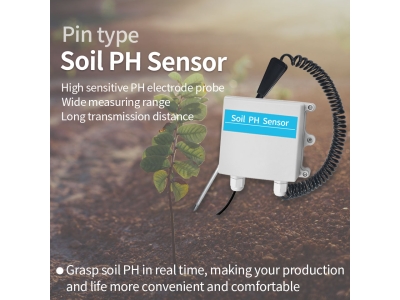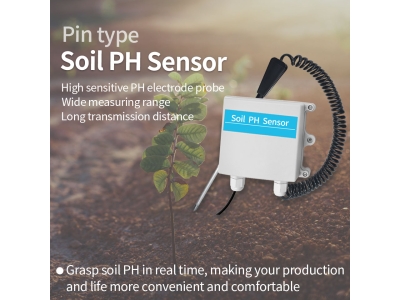Introduction In recent years, the agricultural industry has witnessed a significant transformation due to technological advancements. One such innovation that has revolutionized farming practices is soil sensor technology. By providing real-time data insights, soil sensors have empowered farmers to make informed decisions, optimize resource management, and enhance crop yields. This article delves into the impact of soil sensor technology on modern agriculture and explores the various ways in which it has transformed traditional farming practices.

The Evolution of Soil Sensor Technology Traditionally, farmers relied on manual methods and their intuition to assess soil conditions. However, these methods were often subjective and time-consuming, leading to inefficiencies in resource allocation and suboptimal crop yields. The advent of soil sensor technology has brought about a paradigm shift in the way farmers approach soil monitoring and management.
Soil sensors are equipped with a range of capabilities, including the measurement of moisture levels, temperature, nutrient content, and pH levels in the soil. These sensors can be deployed across agricultural fields, providing real-time data that is accessible to farmers through digital interfaces. This real-time data empowers farmers to gain a comprehensive understanding of their soil conditions, enabling them to make data-driven decisions regarding irrigation, fertilization, and other crucial aspects of crop management.
Empowering Farmers through Real-time Data Insights The integration of soil sensor technology into farming practices has empowered farmers in several ways. One of the most significant benefits is the ability to monitor soil conditions in real time. This real-time monitoring allows farmers to respond promptly to changes in soil moisture levels, thereby optimizing irrigation practices and conserving water resources. By ensuring that crops receive the right amount of water at the right time, farmers can mitigate the risk of overwatering or underwatering, leading to improved crop health and reduced water wastage.
Furthermore, real-time data insights from soil sensors enable farmers to implement precision agriculture techniques. By leveraging the data on soil nutrient levels, pH, and temperature, farmers can tailor their fertilization strategies to meet the specific needs of different areas within their fields. This targeted approach to fertilization not only optimizes nutrient utilization but also minimizes the environmental impact of excess fertilizer application, thereby promoting sustainable farming practices.
In addition to optimizing resource management, soil sensor technology facilitates proactive pest and disease management. Certain soil sensors are capable of detecting indicators of pest infestations or disease outbreaks in the soil. By identifying these early warning signs, farmers can take timely action to prevent the spread of pests and diseases, thus safeguarding their crops and minimizing yield losses.
The insights derived from soil sensor data also contribute to improved decision-making in crop rotation and variety selection. By analyzing historical soil data, farmers can identify trends and patterns that inform their choices regarding crop rotation schedules and the selection of crop varieties best suited to specific soil conditions. This data-driven approach enhances the overall resilience of farming operations and fosters sustainable agricultural practices.
Challenges and Opportunities While soil sensor technology holds immense potential for empowering farmers, its widespread adoption is not without challenges. One of the primary obstacles is the initial investment required for acquiring and deploying soil sensor systems. However, as the technology continues to evolve and become more accessible, the costs associated with soil sensors are gradually decreasing, making them more feasible for farmers, especially those in small-scale operations.
Another challenge lies in the interpretation and utilization of the vast amount of data generated by soil sensors. Farmers may require support in understanding how to effectively analyze and apply the insights derived from soil sensor data. This presents an opportunity for the development of user-friendly interfaces and data analytics tools tailored to the specific needs of farmers, thereby enabling them to harness the full potential of soil sensor technology.
Furthermore, the integration of soil sensor technology with other precision agriculture tools, such as drones and satellite imagery, presents an exciting opportunity for the creation of comprehensive farm management systems. By combining data from multiple sources, farmers can gain a holistic view of their fields and make more informed decisions regarding crop management, resource allocation, and environmental stewardship.
Conclusion Soil sensor technology has emerged as a game-changer in modern agriculture, offering farmers real-time data insights that empower them to optimize resource management, enhance crop yields, and promote sustainable farming practices. As the technology continues to evolve and become more accessible, its potential to revolutionize farming practices on a global scale is becoming increasingly evident. By leveraging the power of real-time data from soil sensors, farmers are poised to navigate the complexities of modern agriculture with greater precision, efficiency, and environmental responsibility.






